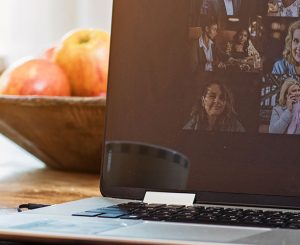Made on Earth by Humans
Gavin Heaton, Founder of the Disruptor’s Handbook, writes about where synergy can meet social purpose in World Creativity and Innovation Week 2018
It’s World Creativity and Innovation Week, so there’s no better time to shine a light on how synergy meets social purpose. By Gavin Heaton.
One of the things that is fascinating about the startup world is its ability to invent, iterate and reinvent. Repeatedly the best startups in the world have shown that the path to creating value is not based on the power of an idea, but on the team’s ability to execute – combining novel concepts, old code, new code and a fresh focus on their customers.
Just look at the way that Facebook has absorbed the features of SnapChat – adapting and integrating the “stories” feature so that users can chronicle their day at the tap of the screen. Or how Elon Musk has reimagined space transport with SpaceX. In both cases, the organisations took existing capabilities and built upon them. They were building on the shoulders of giants – they did not create a “shiny new thing” – they iterated quickly to create new value.
When we think of business, we often think of their focus on out-competing the competition in the market. But when it comes to innovation and new ideas, it’s not about out-competing. It’s about out-communicating. Just look at the way SpaceX tells their story – the small touches they make to change our perspectives, inspire and delight. This is captured at the end of this video in one simple line: ‘Made on Earth by humans’.
So what if we could take this ingenuity – these frameworks for innovation and communication and apply them to social purpose? In 2017, youth entrepreneurship organisation Vibewire challenged us to do just that.
Hacks for good
Vibewire wanted us to apply our innovation and accelerator models to social impact projects. They wanted to know whether we could replicate the success of our programs for Qantas, Johnson & Johnson and UNSW to the social purpose sector. After all, you would think that innovation “made on Earth by humans” would be a natural fit with the social purpose sector – so long as we could get the humans working together, right?
We began – as always – by focusing on the “problems worth solving” (PWS). In our view there are four dimensions to a PWS:
- There is an owner – the problem keeps them awake at night
- Revenue or cost implications – solving the problem would save or make money
- Tried and failed – you know this is a serious problem in your business or industry because you have tried to fix it before and failed
- Impact – if you fixed this problem it would make lives better.
With a focus on intractable problems, Vibewire set an agenda – four hackathons designed to tackle the social, behavioural and technical challenges of:
- Homelessness
- Family and Domestic Violence
- Mental Health
- Financial Inclusion (coming up in May 2018).
For those new to the world of “hackathons” – they are “hacking marathons” where new ideas, technologies and business models are “hacked together” over a short, but intense, period of time. Usually around 48 hours in duration (one weekend), they bring strangers together around a single, shared purpose, encourage them to use their skills and expertise to develop new concepts and then to pitch these to a panel of judges for investment or prizes. It is always amazing to see the creativity and outcomes that can be created in a single weekend.
The final reports and videos from the events tell a great story of what can be achieved in a very short period of time. Each event attracted around 100 participants from all sectors of society. This included:
- People with lived experience (homelessness, domestic violence, mental health)
- Students
- Sector experts
- Academics
- Government
- Business experts
- Developers
- Architects and urban planners
- Gamers
- Data scientists
- Graphic and user experience designers.
And more.
In many ways, hackathons are a way of crowdsourcing talent.
Crowdsourcing or curating expertise
But one of the more thrilling developments in the hackathon program was the active participation and collaboration of the social purpose sector. Organisations like NSW Council of Social Service, Telstra Foundation, SGCH, Jewish House, Exodus Foundation and New Horizons were joined by Domain Group and QBE Insurance had signalled their support for the hackathon, but we wanted more than support. We wanted to make an impact.
Early in the planning phase, we found that there was a misunderstanding between groups – the sense that they were competing and therefore could not easily collaborate. And yet it was clear that the vast wealth of experience and expertise within these organisations was valuable given a new or different context.
We knew that we needed to crowdsource or curate their expertise to make serious progress on the daunting challenge areas we had been set.
With this in mind we worked to frame problems and challenges in such a way that it encouraged collaboration and participation not only from the hackathon participants but also from the sector experts.
During the weekend, mentors from the social purpose sector would mentor and connect teams and ideas. They would work with each other to shepherd hackathon teams through the regulations and requirements that come from working with vulnerable people. And, in turn, the teams showcased the power of innovation, technology and new ways of thinking to not only pitch an idea – but to demonstrate or prototype it working live on stage. Watch this and see.
Making innovation stick
The social impact hackathons are a powerful catalyst for innovation in the social purpose sector, but they require more work, focus and investment to make them “stick”. Out of the 35 or so teams that have been formed, there are more than half a dozen who continue to collaborate and prove out their business models. They do so under their own steam and with the support of Vibewire and partners like Jewish House and NSW Council of Social Service.
The hard truth, however, is that innovation comes at a cost. The question is: how do we support the charities and social purpose sector to drive innovation and make the impact we need to see? Is there a new way?
Fundraising at Work is a new collaboration between Good2Give and GoFundraise. It takes the crowdsourcing and curating concept to a new level. Building on the power of the GoFundraise platform, employees can support the charities and causes they care about by setting their own challenges – running, cycling, climbing, baking, shaving their heads – and more – while also tapping into the power of employee matching programs through Good2Give.
The potential of Fundraising at Work is enormous. Its one-stop shop approach deals with the headache of administration, the cyber and data security of the platforms reduces risk, and the employer matching element can effectively double the size of donations made to causes.
The wisdom and willingness of crowds
When we think about synergy and social purpose, we can often only see challenges and roadblocks. But with the right frameworks and technology, we can seek unexpected opportunities and pathways. Tapping into the wisdom and willingness of crowds gives us all the chance to change a little of the world we live in for the better.
Participating is our chance to make a difference on Earth as a human.
Gavin is the Founder of the Disruptor’s Handbook, one of Australia’s leading independent strategy and innovation companies. Gavin advises firms on strategy, marketing, product development and innovation. He is also a member of the Orbits program, the influencer network of award winning analyst and advisory firm, Constellation Research. Gavin is the Chair of youth not-for-profit organisation, Vibewire, and is on the Good2Give Technology Advisory Group. He is a published author, startup mentor and public speaker.




